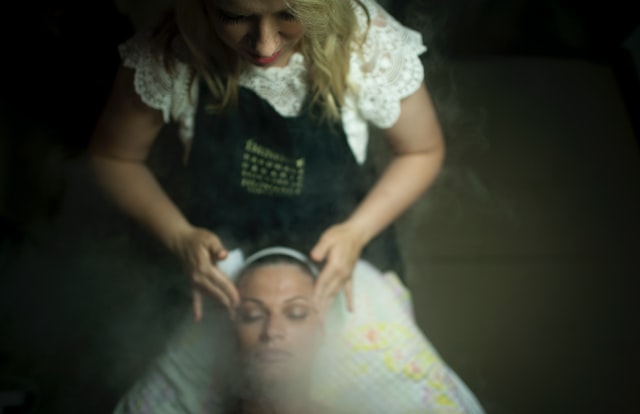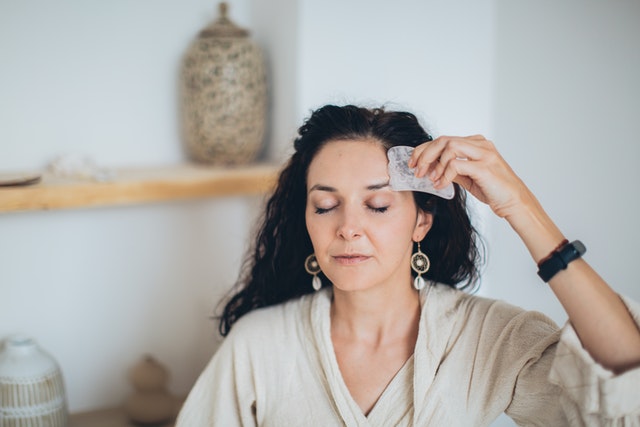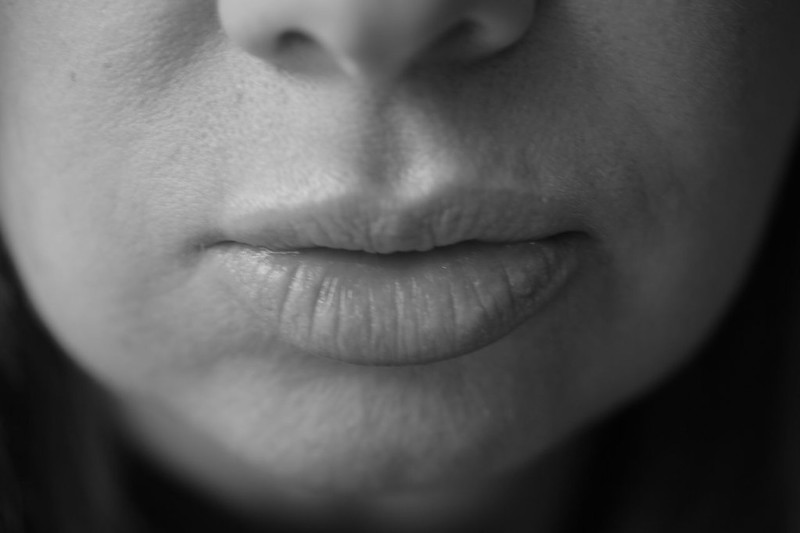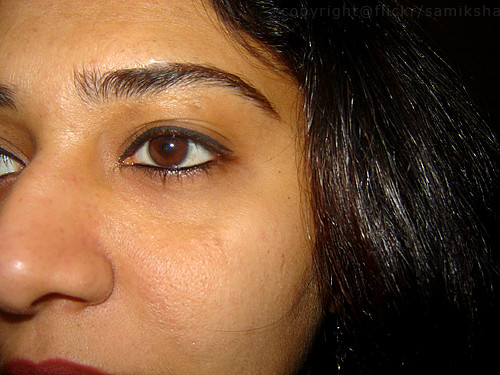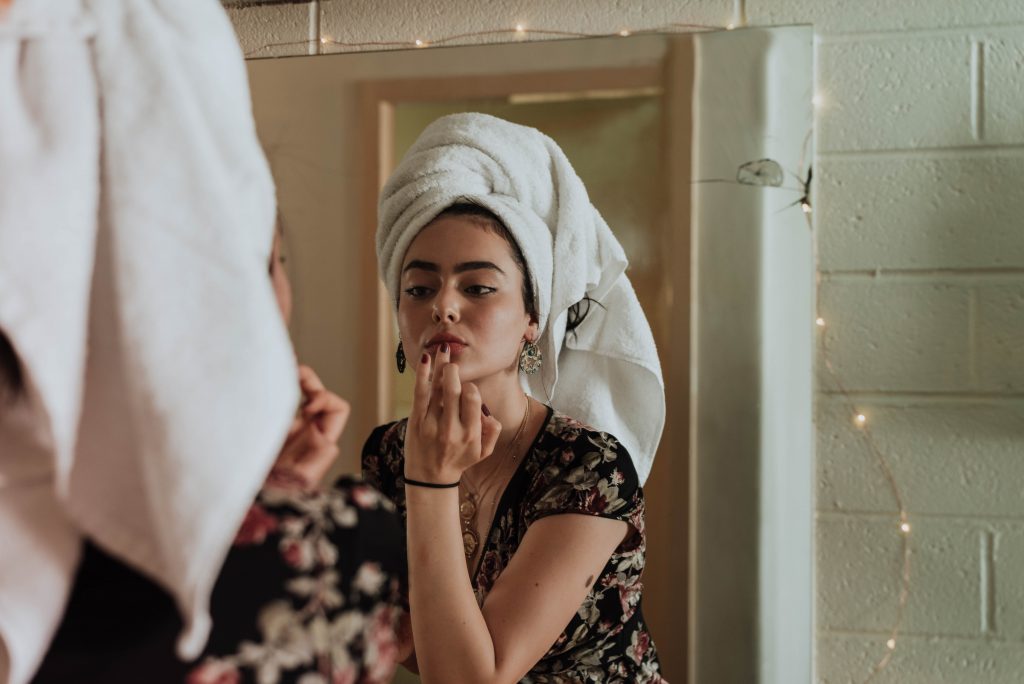Weight loss can be long and arduous, sometimes requiring many years of hard work and dedication. To some, face weight can be one of the most challenging to lose successfully. However, while targeting your face weight may not be directly possible, you can get a toned or slim face with these facial exercises.
What Are Facial Exercises, And Why Are They Effective?
To better help you answer the question ‘Facial Exercises: Fact or Myth?’, we will first begin with explaining what facial exercises involve. In addition, we will also start explaining how such practices can prove to be highly effective in helping you achieve a more toned face, with the added benefit of allowing you to feel healthier.
Face yoga involves using your facial muscles to build strength in the muscles that exist in the area. For the best results from face yoga, many recommend that you perform the exercises daily. Face yoga enhances the strength of your facial muscles, enabling you to slow down the aging process and uplift your face.
Although it is highly improbable to lose face weight with face yoga exercises alone, performing them can hold several advantages that help mold and shape your face.
Best Face Yoga Exercises For A Slim Face
Several types of face yoga exercises can contribute to you achieving a slimmer and more toned face. Some of the activities can also help you stimulate the muscles in your neck and improve blood flow carrying essential nutrients around your face.
Improved blood circulation in your facial muscles can tremendously benefit your skin and overall appearance. When deciding which exercises to choose, make sure that you can comfortably perform them daily (or sometimes multiple times daily).
To help you choose the most suitable exercises, we will cover six practical face yoga exercises.
1. Chipmunk Replica
The chipmunk exercise helps to encourage the strengthening of your facial muscles through repeated, consistent movement across your cheeks. It helps promote blood flow across your cheeks, lips, and even the space between your lips and chin.
The repeated movements required in this exercise help stimulate the skin and muscles around the middle of your face. In addition, performing this exercise twice a day may also help you retain firmer skin.
For this particular exercise, you will need to perform a sequence of straightforward steps:
Step 1: Close your lips tightly but comfortably against each other and fill your cheeks with air.
Step 2: Push the air towards your closed lips and then move the air towards your left cheek.
Step 3: Move the air from your left cheek towards your right, then repeat the process at least twenty times.
Step 4: Release the air by opening your mouth and then take a slow and steady breath.
2. Smile Smoother
One particular facial exercise to do at home is the ‘Smile Smoother.’ This exercise is a popular face yoga exercise that enables you to lift the skin in your lower face and enhance muscle strength between your nose and eyebrows.
This exercise stimulates your facial muscles and makes a tremendous difference to the area just beneath your chin and neck. By moving your facial muscles, the ‘Smile Smoother’ actively encourages blood circulation in many vital areas of your face, giving you a more energetic appearance.
For those who wish to complete this exercise, there are a few steps that you must perform:
Step 1: Open your mouth into an ‘O’ shape and wrap your lips around your teeth. For this step, your lips should not be touching each other, and your teeth cannot be showing. Beginners may be able to benefit from first performing this step in front of a mirror.
Step 2: Mold your mouth into a smile shape while keeping your lips apart and your teeth from showing. Repeat this step 3 times.
Step 3: Hold the smile shape and place your forefinger in the middle of your jaw. Putting your forefinger in that section acts as resistance when performing the following exercises.
Step 4: Open and close your mouth while moving your head upwards and downwards.
Step 5: Repeat once again and release all tension in your face.
3. Forehead Movement
The ‘Forehead Movement’ exercise uses the muscles in your forehead area instead of the muscles in your lower face. The practice aims to strengthen your forehead muscles and encourage smoothing lines/wrinkles in that section.
The forehead movement requires you to use your hands to complete the exercise. If you are eager to try the activity, follow the following list of steps:
Step 1: Place the tips of your fingers on your forehead so that they sit just below where a normal hairline would sit. It would be best to face directly forwards at this stage, and your hands should be semi-covering your face.
Step 2: Slowly move your head backward until you are staring toward the sky. In this step, your hands should move downwards from the top of your head to just above your eyebrows.
Step 3: Repeat the process listed in steps one and two while also attempting to raise your eyebrows.
4. Neck Lift
It would be an excellent idea to work on your neck and chin area to slim down your face. This exercise is highly advantageous for those who want to tighten the skin in their chin area and strengthen the muscles in their neck. It involves using your hands to create tension and massage certain areas in your neck.
If you are keen to attempt the neck lift exercise, then follow the following series of steps:
Step 1: Tilt your head upwards to look towards the sky/ceiling. For this step, make sure that you are not placing too much pressure on the back of your neck.
Step 2: Mold each hand so that your fingers except your thumbs are touching and pointing straight.
Step 3: Place your hands on the bottom of your neck so that your fingers are touching your neck. Subsequently, move your hand upwards towards your chin.
Step 4: When your hands reach the area below your chin, move your hands back to the bottom of your neck and repeat the motion at least ten times.
Step 5: Relax your head to no longer tilting upwards and release all tension.
5. Tongue Movement
This exercise aims to strengthen and increase blood flow to your cheek area. Strengthening the muscles in the area can help tone your face further and help to smooth out lines that may appear in that section. Increased blood flow will also help to bring more nutrients to your cheeks, giving you a more vibrant appearance.
Want to perform this exercise, help tighten your cheek area, and achieve a slim face? Then follow the steps listed below:
Step 1: Place your tongue on the upper left side of the inside of your mouth. Your tongue should now rest between your teeth and lips. Keep your mouth closed for this exercise to act as tension.
Step 2: Move your tongue from the upper left side towards the bottom of the left side of your cheek.
Step 3: Move your tongue upwards again to its original position and repeat this movement five times.
Step 4: Place your tongue on the opposite side (upper right side) of the inside of your mouth.
Step 5: Repeat the movement listed in steps 2 and 3 but on the opposite side.
6. Head Smoother
This particular facial exercise would be highly beneficial in effectively relaxing and smoothing the muscles in your forehead. There have also been individuals who stated that it helped reduce noticeable lines in the forehead section. While the exercise explicitly targets that area, it can also stimulate the area just below the eyebrows and above the nose.
If you are eager to perform this exercise and see the benefits of the ‘Head Smoother,’ then carry out the instructions below step-by-step:
Step 1: Place one of your palms on the middle of your forehead.
Step 2: Slowly and gently slide your palm from the center towards the right side of your forehead.
Step 3: Once your palm reaches the right side, remove it and place your other palm on the middle of your forehead.
Step 4: Move that palm towards the left side of your forehead until you reach the area where your hair starts.
Step 5: Repeat the above steps five times for each side and then relax.
Successfully Achieving a Toned Face Through Facial Exercises
Face yoga is a natural method of helping to strengthen the muscles in your face. While it may not directly correlate with achieving a slim face, it still results in many different benefits. There have also been numerous individuals who have reported excellent results after performing specific face yoga exercises consistently.
A toner, firmer face with more taut skin is not too far-fetched with face yoga. To reiterate a prior point, you must perform them every day for such exercises to yield significant benefits.
Regardless of the type of activity you have decided to choose, they will prove very effective. Add your chosen activities into your regular day-to-day routine and watch as the skin and muscles in your face become healthier and more firm over time.
